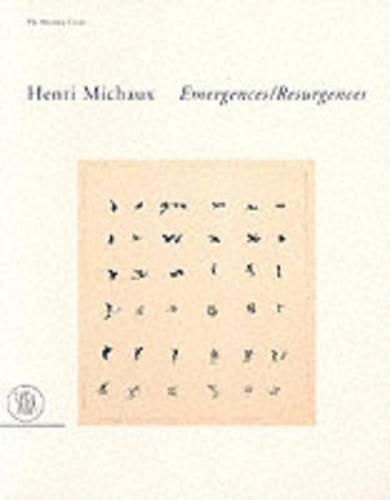
Henri Michaux: Emergences/Resurgences
(Paperback)
Publishing Details
Henri Michaux: Emergences/Resurgences
By (Author) Michaux
Skira
Skira
2nd March 2001
Italy
Classifications
General
Non Fiction
709.2
Physical Properties
Paperback
83
Description
Emergences-Resurgences was first published in 1972. This English language translation of Henri Michaux's celebrated book Emergences-Resurgences has been published on the occasion of the exhibition Untitled Passages by Henri Michaux organized by The Drawing Center in New York. Like all of Michaux's texts (be they visual or verbal), Emergences-Resurgences is a profoundly provisional or occasional work, written on commission, tossed off (one imagines) at considerable speed - as an Action Writer (and Painter), Michaux always wanted to work fast and, ever impatient, ever nomadic, rush on to the next thing at hand. Part essay, part poem - by turns lyric, ekphrastic, didactic, gnomic, and comic - Emergences-Resurgences is also one of Michaux's most sustained self-portraits (as he notes in these pages, the world often comes to him as sheer head or face). Its explicitly autobiographical elements are few, but telling: his childhood in Belgium, his initial foray into drawing in 1925, his first "alphabet" works of 1927, his travels to Asia during 1930-31, his various stays, during the mid-1930s, at the Meudon home of his closest friend, the publisher Jacques-Olivier Fourcade, the hospitalisation for tuberculosis (1946) and subsequent death by burnwounds (1948) of his wife, Marie-Louise, his first experiments with mescaline in 1956. These dates and events, however, merely provide the barest external framework for the true autobiography that is told in these pages, namely, the further gnostic adventures of Monsieur Plume, a picaresque account of a man whose deepest (and most saintly) life takes place on the page, as he ceaselessly reinvents himself, pen or brush in hand, and propels himself ever forward (as one of his late titles has it) par les traits, via stigmata or marks.
Author Bio
Henri Michaux. Belgian painter and poet. After the beginnings influenced by Surrealism, he travelled to Asia and the Far East (1933). Throughout his life his informal paintings and drawings were strictly intertwined with his poetic production.
